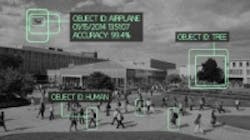Algorithm recognizes objects without human calibration
A smart recognition algorithm developed by Brigham Young University (BYU) researchers is able to accurately identify objects in images or video sequences without human calibration.
Dah-Jye Lee, BYU engineer, developed the algorithm along with his students with the intention of allowing the computer to decide which features are important, instead of manually deciding what features to focus on and writing the algorithm based off that. The algorithm, according to the BYU press release, sets its own parameters and does not require a reset each time a new object is recognized. Instead, it leans them on its own.
Lee suggests that the idea is similar to teaching a child the difference between dogs and cats in the sense that, instead of trying to explain the difference, he is showing children images of the animals and they learn on their own to distinguish the two. In a study published in the December issue of Pattern Recognition, Lee and his students describe how they fed their algorithm four image datasets from CalTech (motorbikes, faces, airplanes, and cars), and found 100% accurate recognition on each dataset.
In addition, the team testing its algorithm on a dataset of fish images of four species of fish from BYU’s biology department, and the object recognition program was able to distinguish between the species with 99.4% accuracy. Lee suggested in the press release that the algorithm could be used on a number of applications, including the detection of invasive fish to identifying flaws in produce on a production line.
"It’s very comparable to other object recognition algorithms for accuracy, but, we don’t need humans to be involved," Lee said. "You don’t have to reinvent the wheel each time. You just run it."
View the BYU press release.
Also check out:
Software aims to characterize algorithm performance
Image analysis algorithm will help NASA's Curiosity Rover analyze Mars soil
Algorithm compensates for simple lens aberrations
Share your vision-related news by contacting James Carroll, Senior Web Editor, Vision Systems Design
To receive news like this in your inbox, click here.
Join our LinkedIn group | Like us on Facebook | Follow us on Twitter | Check us out on Google +
About the Author

James Carroll
Former VSD Editor James Carroll joined the team 2013. Carroll covered machine vision and imaging from numerous angles, including application stories, industry news, market updates, and new products. In addition to writing and editing articles, Carroll managed the Innovators Awards program and webcasts.
